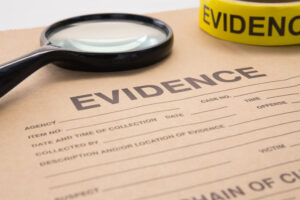Being a successful criminal defense attorney requires understanding what is admissible in court and how to use evidence to build a watertight case. With his extensive experience in criminal law, Attorney Sal Ciulla adeptly maneuvers through these complexities to get justice for his clients.
Types of Evidence in Criminal Defense
The pivotal criterion for deciding if evidence is admissible in court is its relevance to the case. Any evidence that increases or decreases the probability of a material fact compared to its absence can be relevant. Generally, judges allow evidence they deem relevant and exclude irrelevant evidence.
Five broad categories of evidence are admissible in criminal defense trials.
- Physical evidence: Tangible items attorneys can present in court include weapons, clothing, fingerprints and DNA samples. Physical evidence establishes facts like a person’s presence at a crime scene or involvement in criminal activity. It is generally admissible if collected and preserved following legal protocols.
- Documentary evidence: Written or printed materials that provide information relevant to the case include emails, texts, contracts and logs. If authentic and not forged or tampered with, documentary evidence establishes timelines, motives or behavioral patterns.
- Testimonial evidence: Statements made by witnesses under oath in court or during depositions can corroborate or refute physical and documentary evidence, providing insights into the sequence of events or the character of the accused. Testimonial evidence is usually admissible, but subject to scrutiny under cross-examination to assess reliability and credibility.
- Digital evidence: Data stored or transmitted in digital form, such as social media posts, photos and GPS data, are increasingly crucial in establishing alibis or disproving allegations based on location and activity logs.
- Demonstrative evidence: Maps, diagrams and videos used to illustrate testimony or facts can clarify complex facts for the jury or judge, making it easier to understand spatial relationships or sequences of events. Demonstrative evidence must be accurate and fairly represent the scene or events in question.
Using Evidence in Defense Strategy
Criminal defense lawyers like Sal Ciulla use evidence to construct narratives that support their clients’ cases.
- Collection and preservation: Gathering all relevant evidence while preserving it in a legally acceptable way to prevent challenges related to tampering or contamination.
- Analysis: Critically analyzing all available evidence to identify strengths and weaknesses in the prosecution’s case can involve consulting with experts, especially in cases involving complex technical evidence like DNA or digital records.
- Challenging evidence: Objecting to the admissibility of improperly obtained evidence or information that violates the accused’s rights includes questioning witness credibility or the accuracy of law enforcement procedures.
- Presenting alternative arguments: Using evidence to present alternative explanations for the facts asserted by the prosecution, thereby creating reasonable doubt about the guilt of the accused.
Skilled Legal Representation in Southern California
Effective evidence use is paramount in criminal defense. Attorney Sal Ciulla’s decades of expertise ensure every piece of evidence serves a purpose, whether it’s to challenge the prosecution’s claims or to bolster the defense’s narrative.
Understanding what counts as evidence and how it can influence the outcome of a court case is crucial for anyone involved in criminal proceedings. Sal Ciulla secures the best possible outcomes for his clients through meticulous preparation and strategic evidence use. Contact us to schedule your consultation with one of Southern California’s top trial lawyers.







